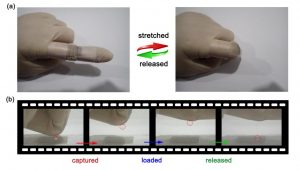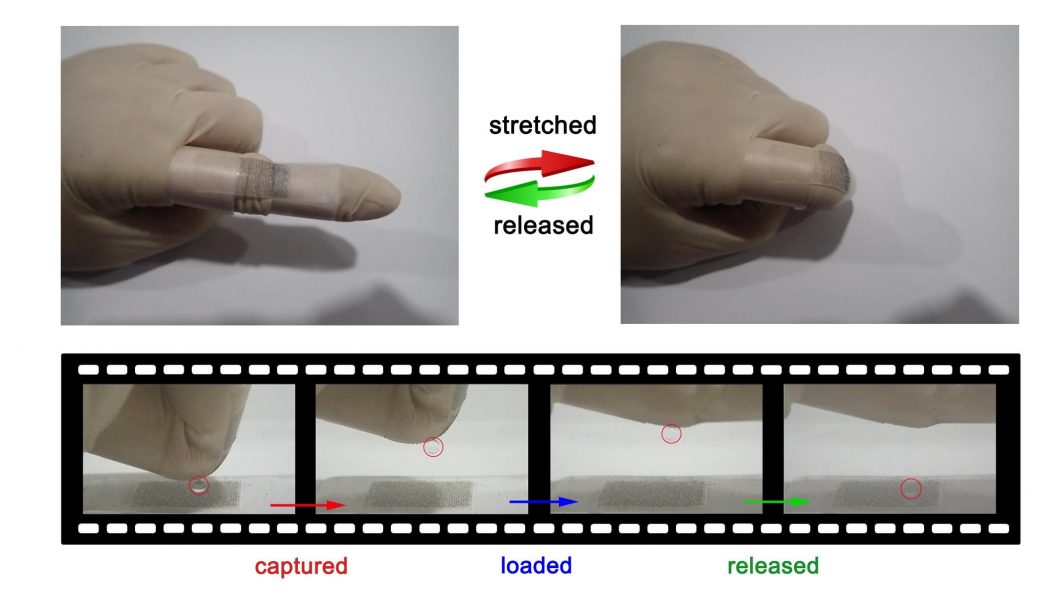Owning to their superior non-wetting property, superhydrophobic surfaces are of great value in both fundamental science and industrial applications. Especially, the reversible and dynamic control of the surface superwettability is desired in cutting-edge applications.
In the future, devices and systems will be more and more “intelligent”, it will become easier to achieve more complex functions through simple processes. However, making superhydrophobic surfaces smart in a simple and human-friendly manner is still challenging.
Although superhydrophobic surfaces with tunable dewetting properties have been achieved under various external stimuli, such as UV light, high temperature and toxic chemicals, many reported regulating processes pose a potential risk to human health. Up to now, wearable superhydrophobic surfaces are still rare, especially for which permits dynamic wetting modulation. One of critical challenges is how to control the surface structure in a human-friendly manner.

a) Exertion and release of a strain on the wearable surface by human motions. b) “Tweezer on finger” demonstrating capture, transfer, and release of a water droplet.
Professor Yong-Lai Zhang from Jilin University, Professor Hong-Bo Sun from Tsinghua University, and their co-workers, report overcoming this challenge by mimicking real skin. They presented a wearable water-repellent elastomer skin, which can be switched between different wetting states, achieving the controllable manipulation of water droplet by human motions (see Figure).
Direct laser writing (DLW) technique was employed to generate large-scale programmable skin-like textures on an elastomer. Additionally, the laser treatment also altered the surface chemical composition. The prepared flexible surface containing hierarchical micro-/nano-structures is extremely water repellent and skin conformable. The surface topography can be finely regulated in a rapid, reversible, and mild manner by simple stretching, it provides the feasibility of controlling the surface wettability by simple body motions.
As a typical example, the smart artificial skin can be applied to the joints of fingers as a wearable tweezer, to capture and release of droplets under finger motions without energy supply or external appliance.
Professor Zhang states, “This work may advance the field since it highlights the unique merits such as the wearable property and simple body motion switching. It also inspires us to develop wearable superhydrophobic swimwear, which may help for under-water drug reduction. Besides, we also consider integrating this kind of superhydrophobic skin with flexible or wearable electronic devices. Anyway, more challenging work is waiting us.”

















